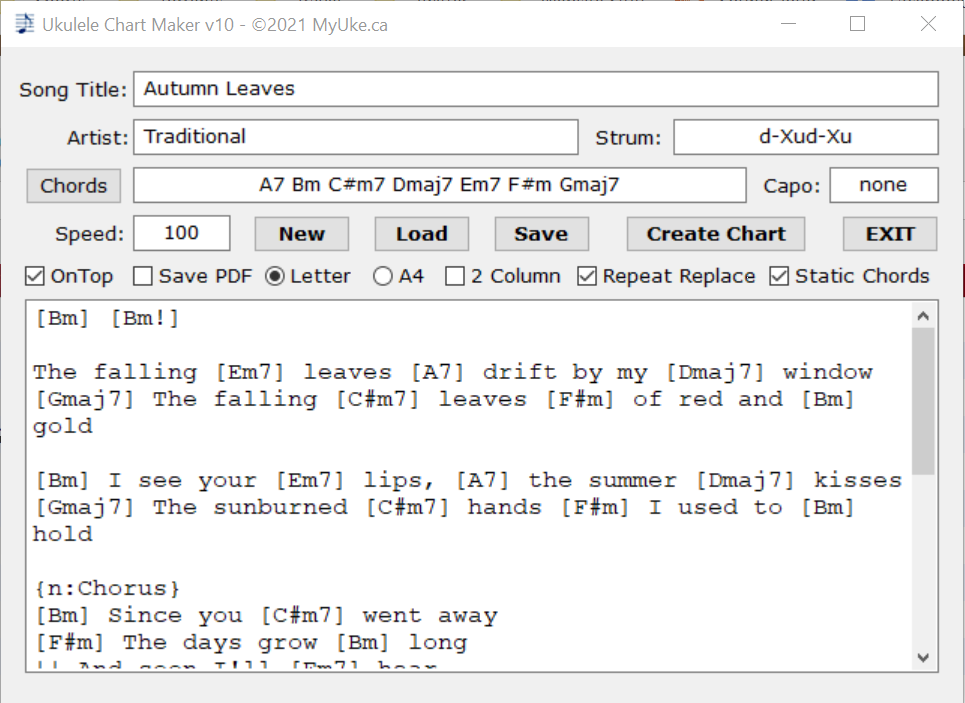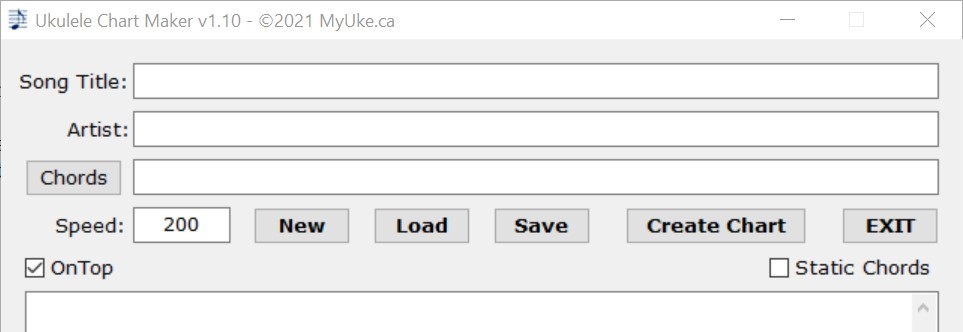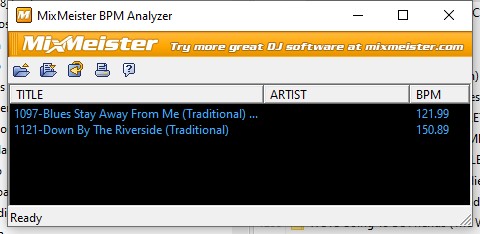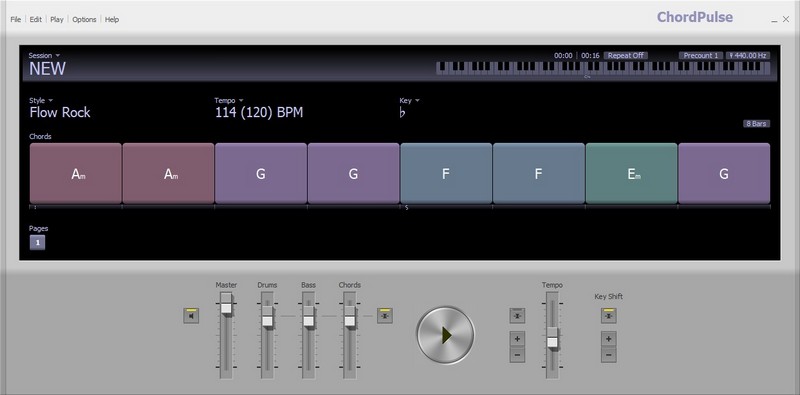-
How To Play A Ukulele? (with AI)Dec 8, 2023
It's been over a year since I created a News post and I thought I'd have a bit of fun. I headed over to Copy AI and asked a simple question, "How To Play A Ukulele?"
This is the response I received:
Playing the ukulele can be a fun and rewarding experience. Here's a step-by-step guide to get you started:
1. Familiarize yourself with the ukulele: Get acquainted with the various parts of the ukulele - the body, neck, fretboard, and tuning pegs. Understand how to hold it properly and position your fingers.
2. Learn the basic chords: Start by learning a few basic chords such as C, F, G, and Am. These chords are easy to play and widely used in many songs. Practice transitioning between these chords smoothly.
3. Strumming: Experiment with different strumming patterns to create different rhythms and sounds. Start with a simple downstroke using your thumb or fingers. Gradually practice more complex patterns, incorporating both upstrokes and downstrokes.
4. Practice scales and exercises: Practicing scales and finger exercises will help improve your finger dexterity and coordination. Start with simple exercises like playing each string individually, then progress to more complex patterns and scales.
5. Learn songs: Explore online resources, tutorials, or songbooks to find songs that you enjoy and that are suitable for beginners. Start with simple songs that use the chords and strumming patterns you have learned.
6. Practice regularly: Consistency is key to improving your skills. Set aside regular practice time each day or week to develop your technique and build muscle memory.
7. Experiment and have fun: Once you have a solid foundation, don't be afraid to experiment with different chord variations, fingerpicking styles, and song arrangements. Use your creativity to make the songs your own.
Remember, learning to play the ukulele takes time and patience. Don't get discouraged if you encounter difficulties along the way. Keep practicing, and soon you'll be playing your favorite songs with confidence! -
All UKE Files Created + moreOct 17, 2022
All UKE files (".uke") have been created with Ukulele Chart Maker and have been added to the Songs page.
I've also created a small standalone program to create Lyrics text files from ".uke" files. The "Lyrics Generator" program can be found on the Download page.
There has now been more than 100 ukulele playalong audio files posted to SoundCloud.
-
Ukulele Chart Maker v10 RELEASEDOct 2, 2022
Ukulele Chart Maker v10 released with some added features:
• Added "2 Column" HTML file creation
• Improved default file naming process
• Added "keep" scripting command (Helps with 2 column file creation)
• Function keys now only work when Ukulele Chart Maker is the active Window
• Changed version numbering method
• Added option of using Monospaced Font (Courier New)
-
Almost all UKE Files AddedSep 8, 2022
Almost all the UKE files (".uke") created with Ukulele Chart Maker have been added to the Songs page for download. I only have the Christmas songs remaining and these should be completed before December.
-
Alternate Songs PageAug 19, 2022

I added a secondary Ukulele Songs page where the songs are not displayed inside an HTML iframe (an iframe displays a web page inside a web page). This should improve viewing for tablet and phone users.
The link can be found in the upper right had corner of the Ukulele Songs page.
-
SoundCloud Ukulele PlayalongsJune 23, 2022
• 1 2 3 4 (Feist) I've started to add Ukulele Playalong sound files to SoundCloud. These files follow the chord charts that I've posted on the Songs page. The first 3 SoundCloud files are:
I've started to add Ukulele Playalong sound files to SoundCloud. These files follow the chord charts that I've posted on the Songs page. The first 3 SoundCloud files are:
• California Girls (The Beach Boys)
• For What It's Worth (Buffalo Springfield)
I'll continue to post SoundCloud files in no paritcular order. Should you wish to suggest a playalong file please send me a message through the Contact page.
-
Ukulele Chart Maker v1.70Jan 18, 2022
With the release of Ukulele Chart Maker v1.70 you can now switch between instruments and their chords. By default a ukulele tuned to GCEA/gCEA is used. However, by adding the commands of {baritone}, {DADD} (tuning used by the Seagull Merlin, Grand Strumstick and DAD Dulcimers), or {mandolin} (GDAE tuning also used by a violin) to the text area you can change to these instruments and display their chords.
A file named "mychords.ini" has been added so that you can define your own chords. This file follows the same format as the main "chords.ini" file but the chords in this file override the chords defined in "chords.ini". The "chords.ini" file is always maintained by the application and the "mychords.ini" file is never touched so you can edit whatever and whenever you wish.
-
Ukulele Chart Maker v1.60Dec 22, 2021
Another update to the Ukulele Chart Maker. The interface looks the same but Function Keys have been added:
<F1> - Strip White Space
<F4> - Transpose chords down one semitone
<F5> - Transpose chords up one semitone
<F10> - Search and Replace
<F12> - Display the "Function Key Menu"New Chords added: "Dbm@@=1444" (C#m@@=1444), "Ab/G=0343" (G#/G=0343), "Bbdim7=0101" (A#dim7=0101)
Bold text formatting added.
-
Ukulele Chart Maker v1.50Nov 18, 2021
The initial appearance of Ukulele Chart Maker v1.50 hasn't changed but you can now resize the application window to suit your desktop. The resizing is also saved to your default settings.
Additional features with this release are: • Added a file association for ".uke" so they automatically open in Ukulele Chart Maker
• Added a "saveimages" hidden setting to "defaults.ini" so you can save file space in created HTML files (if you so choose)If you're reading this article then you can purchase Ukulele Chart Maker at the pre-Boxing Day 35% discounted price by using the code "48HOUR".
-
Ukulele Chart Maker v1.40Nov 10, 2021
Since last News update about the Ukulele Chart Maker the program has had the following enhancements added:
• The last screen position is recorded.
• Added "Repeat Replace" function. This means you can define a section and have it repeated where you desire.
• Holding the [SHIFT] key down while clicking the "Create Chart" button will save the chord images to an external folder named "chord_img".
• Added a "Strum" and "Capo" input fields.
• Added ToolTip bubbles for "Chords", Strum", and "Capo".
• Added hidden settings in the "defaults.ini" file.Thanks for the support!
-
Ukulele Chart Maker v1.20Oct 4, 2021
With the release of version 1.2 of Ukulele Chart Maker you can now save your charts directly to PDF format.
Producing a Chord Chart with Static Chords and projecting the resulting HTML file onto a screen works incredibly well for Ukulele Groups and home play. Within the HTML file is Javascript code which allows the setting of scrolling speed and text font size.
-
Ukulele Chart Maker v1.10Sep 30, 2021
You can now have the Ukulele Chart Maker app remain "On Top". As well, you can also create an HTML file with Static Chords. This means the chords will always appear on screen even while to song is being scrolled. You can view this feature in operation by visiting here.
The Ukulele Chart Maker program is available at a 25% discount until the end of October. A DEMO version can be found on the Downloads page.
The next version will contain PDF printing support.
-
Ukulele Chart Maker - OFFICIAL RELEASESep 21, 2021
It's been quite a while since I've made a post to the News page but, after a few months of programming, I've completed the first release of a program called Ukulele Chart Maker. This Windows program will allow users to create Ukulele Chord Charts like those found on the Songs page of this website. The created files are self contained web pages that have all chord graphics along with some functional Javascript code.
The Javascript code is great for enabling scrolling of a song that is longer than your vertical screen size. You also have the ability to change the scrolling speed and enlarge the song font. You can easily distribute these self contained files or post them on the Internet.
I created a chart for "Take Me Out To The Ball Game". An example of the produced chart with the current version of Ukulele Chord Chart can be found here.
A future version of Ukulele Chart Maker will allow you to make the chords static on the webpage as seen here.
You can download a DEMO version of Ukulele Chart Maker on the Downloads page. The DEMO version comes with 21 sample charts.
-
Drag & Drop Audio and Video ConversionDec 20, 2020
 Recently I wrote two simple programs to convert audio and video files. I often have to convert a bunch of audio files to various formats so I can load them onto a looper or upload files to this website. I had noticed that the Nux Converter used the FFmpeg software for their conversion utility so I though I'd take a look at doing the same. The creation of the audio converter was so easy I decided to write a video program as well.
Recently I wrote two simple programs to convert audio and video files. I often have to convert a bunch of audio files to various formats so I can load them onto a looper or upload files to this website. I had noticed that the Nux Converter used the FFmpeg software for their conversion utility so I though I'd take a look at doing the same. The creation of the audio converter was so easy I decided to write a video program as well.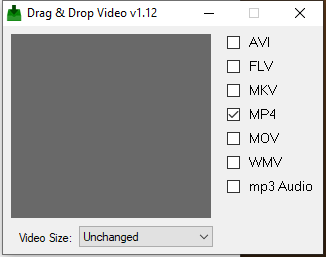 For the most recent version of the video converter (posted today) I added the ability to convert to various video sizes. You can easily customize the video sizes to whatever you desire by following the instructions in the "_ReadMe.txt" file.
For the most recent version of the video converter (posted today) I added the ability to convert to various video sizes. You can easily customize the video sizes to whatever you desire by following the instructions in the "_ReadMe.txt" file.A word of caution; I've noticed that on rare occasions FFmpeg hasn't always converted properly for me. The other day a large ".m4a" was cut short by 2 minutes. As well, I've had a few very short WAV files not convert to MP3. I haven't noticed any issues with video conversion. I'm assuming the errors produced were due to corrupt files to begin with.
Both programs require no installation and can be downloaded on the Downloads page.
-
Lava U Carbon Fiber Ukulele (Tenor) - REVISITEDOct 28, 2020
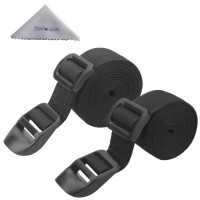 I did some further research into a Lava U Ukulele strap and found the site http://www.mobiusstrap.com. After investigating what was unique about this product I discovered nothing. I figured I could make my own Mobius Strap and ordered two 68" luggage straps online for under $10.
I did some further research into a Lava U Ukulele strap and found the site http://www.mobiusstrap.com. After investigating what was unique about this product I discovered nothing. I figured I could make my own Mobius Strap and ordered two 68" luggage straps online for under $10.You can view how to use the Mobius Strap at: http://www.mobiusstrap.com/how.html
I suggest enhancing this makeshift strap by adding a few pieces of Velcro tape to key positions on the Lava U to lock the strap in position.
-
Finding the Tempo (or BPM) of a SongOct 23, 2020
When I'm creating my loops or working with ChordPulse I often want to find the tempo, or BPM (Beats Per Minute) of a song. There are many ways to do this and most are "free".
Two websites that perform this task are Song Key Finder (https://www.audiokeychain.com) and MP3 TO BPM (https://getsongbpm.com/tools/audio). Both sites require you to upload a music file and the website does the rest.
Recently I purchased a very inexpensive ($3) piece of software called MixMeister BPM Analyzer (https://www.mixmeister.com/bpm.php) which also performs the job nicely. I tried other free pieces of software but none of them worked to my satisfaction the way MixMeister BPM has.
A word of advice, when using any product to find the BPM all coding always assumes that a song is in 4/4 time so you'll have to do a simple calculation if your song is in 3/4 time or some other tempo. As well, not all songs maintain a constant tempo so using one of these options will not always produce a quality result.
-
Looping Equipment (Part 2)Sep 2, 2020
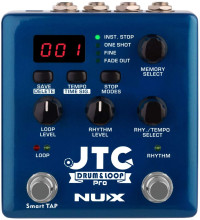
 I recently purchased a Nux JTC Drum & Loop Pro. I now have two pedals where I can load loops. I'm using this pedal to load my favourite samples for play-alongs.
I recently purchased a Nux JTC Drum & Loop Pro. I now have two pedals where I can load loops. I'm using this pedal to load my favourite samples for play-alongs.The Nux JTC Drum & Loop Pro is the higher end Nux model allowing for 256 samples to be loaded in WAV 44100 24bit quality and 6 hours of storage. It also comes with preloaded drum loops: 25 4/4 beats, 10 3/4 drum beats, 5 shuffle beats with adjustable tempo between 40-240bpm. There are also available drum fill patterns and is very easy to use.
Nux also offers two other models of loopers. A step down from the Nux JTC Drum & Loop Pro is the Nux Loop Core Deluxe. The Nux Loop Core Deluxe only has 99 available slots for loops and 40 different drum rhythms (30 in 4/4, 10 in 3/4) but doesn't appear to have drum fills. It comes with 8 hours of memory storage and a footswitch. Loaded samples are in the same same WAV quality as the Nux JTC Drum & Loop Pro.

The lower end model is the Nux Loop Core. It appears to be almost identical to the Deluxe model but the sample rate for loops has been reduced to 16-bit and memory storage has been reduced to 6 hours. I wouldn't be too concerned about the drop in audio quality.
The loading of samples to all units was a bit slow to do manually so I wrote a program to autoload samples. My NuxLoader program is available through the Downloads page.
All the WAV loops available on the Songs page are 44100 16bit format. Nux has put out a free and simple Audio Format Converter that uses ffmpeg. It converts various formats to WAV for use with these three products. I've made it also available on the Downloads page.
-
Android Looping Apps (Music Players)Aug 23, 2020
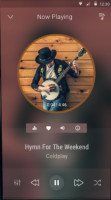
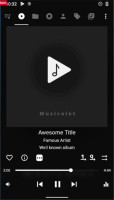
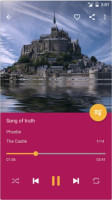 Many Android music players claim that they play gapless loops but, despite what they say, I've discovered quite a few that do not. The issue tends to be in the length of the loop. Typically if a loop is less that 3 seconds then they don't play a gapless loop. Most Android interfaces, display, and features are similar so choosing a player is a tough call for each individual.
Many Android music players claim that they play gapless loops but, despite what they say, I've discovered quite a few that do not. The issue tends to be in the length of the loop. Typically if a loop is less that 3 seconds then they don't play a gapless loop. Most Android interfaces, display, and features are similar so choosing a player is a tough call for each individual.Pulsar was one of my first purchased audio players that played loops without gaps. A smooth interface with frequent updates and support.
If you're looking for a "free" player then give Musicolet a try. Again, gapless playing, not as glamorous an interface, but you can't beat the price.
Another recent discovery is Muzio. What's a bit odd about this player is, for some odd reason, they developer doesn't use the apps name on Google Play. Again, this app loops audio extremely well and has an excellent interface.
-
Looping Equipment (Part 1)Aug 14, 2020
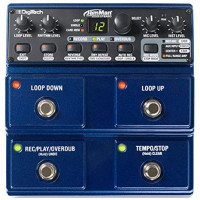
 Using a looper can be helpful if you're trying to get a bit more out of your playing. I've owned a Digitech Jamman Solo XT for a number of years and I bought it because it's one of the few loopers that holds 200 internal loops. It also has an SD memory slot to hold 200 more. The memory card is changeable giving you far greater flexibility. I have over 1200 loops (mostly drum tracks) that I currently use. A great number of these are available for download on the Songs page.
Using a looper can be helpful if you're trying to get a bit more out of your playing. I've owned a Digitech Jamman Solo XT for a number of years and I bought it because it's one of the few loopers that holds 200 internal loops. It also has an SD memory slot to hold 200 more. The memory card is changeable giving you far greater flexibility. I have over 1200 loops (mostly drum tracks) that I currently use. A great number of these are available for download on the Songs page.There's are higher end version of this product called "Digitech Jamman Stereo Looper Delay Pedal". Although this product may have a few more features it has half the storage capacity as my Jamman Solo XT.
 A complimentary item for the Jamman products is the
A complimentary item for the Jamman products is the 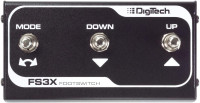 Digitech FS3X Footswitch. The footswitch allows you to change loops more easily (up and down buttons) and the 3rd button works as a Stop (upon other things).
Digitech FS3X Footswitch. The footswitch allows you to change loops more easily (up and down buttons) and the 3rd button works as a Stop (upon other things).If I was performing I'd probably consider getting a Nux Loop Core. The Loop Core does everything the Jamman Solo XT does except it doesn't have a memory slot but it does hold 99 loops. This would be perfect for a live performance and comes at a cheaper asking price.
-
Creating Backing Tracks - ChordPulseAug 2, 2020
I've done quite a bit of research looking for a software program to create backing tracks. Of all the ones I've tried I've found ChordPulse to suit my needs the best.
 For $29US ChordPulse offers 178 music styles laid out in categories: Pop, Rock, Jazz+Blues, Synth, Country, World, Extra. You create a song by entering chords in the order they appear. By using page numbers you can repeat your chords to compose your song. For example, you may want to create a page for the intro, verse, and chorus. You the assemble the page numbers in the order that they appear for your song. As well, ChordPulse offers quite a few arrangement presets to fine tune your composition. Windows only!
For $29US ChordPulse offers 178 music styles laid out in categories: Pop, Rock, Jazz+Blues, Synth, Country, World, Extra. You create a song by entering chords in the order they appear. By using page numbers you can repeat your chords to compose your song. For example, you may want to create a page for the intro, verse, and chorus. You the assemble the page numbers in the order that they appear for your song. As well, ChordPulse offers quite a few arrangement presets to fine tune your composition. Windows only!Using ChordPulse I've created a track for Spooky by Dusty Springfield and you can listen to it by clicking the "Play Audio" button. You can listen to the Dusty Springfield original here.
ChordPulse is a handy backing band software for music practice, inspiration, improvisation, and pure fun with music. Play and sing along with ChordPulse. Use it as a full accompaniment, a drum machine with bass, a metronome with chords, and more.
In the near future I'll review another piece of software that I use but I'll hold back the title until I write the article.
-
Going Wireless - Other AccessoriesJul 19, 2020
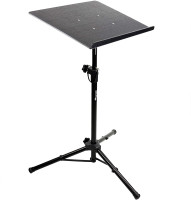 For years I've had a low night table situated by my computer which held my mixer. Although it served me well the table blocked a drawer to my desk which made it difficult to open.
For years I've had a low night table situated by my computer which held my mixer. Although it served me well the table blocked a drawer to my desk which made it difficult to open.  Enter the RockJam Tripod Laptop Stand. This unit is adjustable in height from 25 to 44 inches and the shelf is 16" by 20" with the ability to change the angle of the shelf.
Enter the RockJam Tripod Laptop Stand. This unit is adjustable in height from 25 to 44 inches and the shelf is 16" by 20" with the ability to change the angle of the shelf.Previously I mentioned I had purchased a wireless set of headphones and from time to time these need to be recharged. The COZOO Headphone Stand has 3 USB ports and 2 power outlets in a very appealing compact design. With a few short USB cables my headphones and cell phone are being charged and my desk looks a little more organized.
-
The Best Ukulele Songbooks (Part 2)Jul 10, 2020
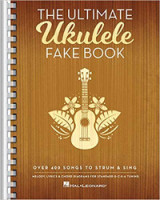
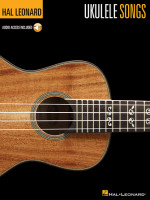 In February I posted a few must have Ukulele Songbooks and as a follow-up I'm going to add a few more.
In February I posted a few must have Ukulele Songbooks and as a follow-up I'm going to add a few more.There appear to be a follow-up to the Ukulele Fake Book called "The Ultimate Ukulele Fake Book" published in 2018. I scanned a bit of the content and through my eyes it looks like all 400+ songs are different from the original publication. The first book was amazing so I imagine this one is, too. I've added it to my Amazon Wish List.
Hal Leonard published a plethora of music books and many for the ukulele. An earlier song book that I purchased was simply called, "Ukulele Songs". This book only has 10 songs but most of them I like.
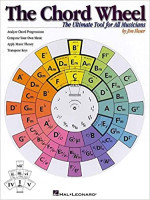 Another feature of this book is that you are given a 16-digit access code which enables you to access playalong files on the Hal Leonard website. You can play these files online through an online player that allows to to vary the song speed, pitch, or even set a loop within the song for practice. The files can also be downloaded.
Another feature of this book is that you are given a 16-digit access code which enables you to access playalong files on the Hal Leonard website. You can play these files online through an online player that allows to to vary the song speed, pitch, or even set a loop within the song for practice. The files can also be downloaded.If you're a composer you'll probably want to get a copy of "The Chord Wheel". This book is only 12 pages long but the does a good job explaining chord theory. The cover of the book is a usable chord wheel and helps in transposing keys, develop chord progressions, and composing your own music. This book isn't just for the ukulele, it's for all instruments and musicians.
-
Going Wireless - Electric UkulelesJun 27, 2020
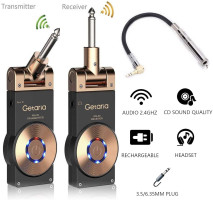 I currently have 2 sets of Golden Plugs to make my electric ukuleles wireless. I purchased both around the same time and if you look at the design and operation of both I believe the two systems are identical. It does seem very odd that the Amazon ratings of each differ. Both the Getaria WS-20 and
I currently have 2 sets of Golden Plugs to make my electric ukuleles wireless. I purchased both around the same time and if you look at the design and operation of both I believe the two systems are identical. It does seem very odd that the Amazon ratings of each differ. Both the Getaria WS-20 and 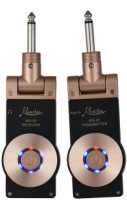 Rowan WS-20 came in identical packing boxes and the manuals are identical. Nowhere in the manuals does it mention any contact information.
Rowan WS-20 came in identical packing boxes and the manuals are identical. Nowhere in the manuals does it mention any contact information.I've never had any issue with any of the Wireless Guitar Systems that I've tried. To me it's a matter of preference. I prefer a system that doesn't have a wire antenna sticking from the unit. I'm also fine with a rechargeable system (these are) as most of the systems have substantial battery life. I've never had a unit quite and from details I've read these units should last from 3-6 hours. If you require multiple ukuleles (or whatever), both systems can be paired with up to 6 units.
-
Going Wireless - Other Wireless MicrophonesJun 9, 2020
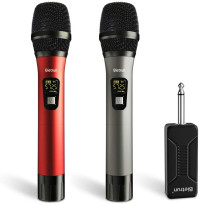 While I think my Xvive U3 Wireless Microphone System is great I still require something that anyone and everyone can use to sing-along. I purchased the Bietrun Wireless System as well. This system comes with two microphones and is extremely easy to connect to a mixer or amp. I do find the microphones are a little low in volume and when turned on they are set at the lowest level. A series of quick taps of the power button will increase the volume to its maximum setting.
While I think my Xvive U3 Wireless Microphone System is great I still require something that anyone and everyone can use to sing-along. I purchased the Bietrun Wireless System as well. This system comes with two microphones and is extremely easy to connect to a mixer or amp. I do find the microphones are a little low in volume and when turned on they are set at the lowest level. A series of quick taps of the power button will increase the volume to its maximum setting.The two microphones each use a pair of AA batteries but the receiver uses a rechargeable battery which will last up to 6 hours.
-
Going Wireless - Bluetooth ReceiverJun 2, 2020
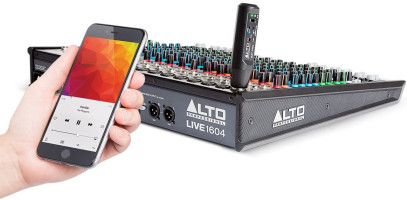 If you're familiar with how I play ukulele songs you know that I like playing along to loops. I often use my tablet to transmit these loops to my mixer and I transmit with bluetooth to my Alto Bluetooth Receiver. The receiver is inserted into a microphone port and is extremely easy make a connection.
If you're familiar with how I play ukulele songs you know that I like playing along to loops. I often use my tablet to transmit these loops to my mixer and I transmit with bluetooth to my Alto Bluetooth Receiver. The receiver is inserted into a microphone port and is extremely easy make a connection. An alternative to this could be the less expensive Mini Wireless Bluetooth Receiver which connects into an auxiliary port. You would require a 1/4" adapter to connect to a mixer at it appears to be a very easy solution. I have a couple of these ordered but have yet to receive them. At under $10 a piece it's worth the gamble.
An alternative to this could be the less expensive Mini Wireless Bluetooth Receiver which connects into an auxiliary port. You would require a 1/4" adapter to connect to a mixer at it appears to be a very easy solution. I have a couple of these ordered but have yet to receive them. At under $10 a piece it's worth the gamble. -
Going Wireless - MicrophoneMay 16, 2020
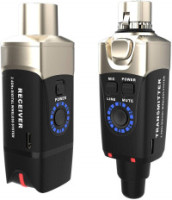 There are many wireless microphones on the market but after purchasing a 3-pack of the Behringer XM1800S mics I wasn't in the mood for buying more microphones. The Xvive U3 Wireless Microphone System caught my eye. Although a bit on the pricey side I made my purchase and I'm sold on this type of system.
There are many wireless microphones on the market but after purchasing a 3-pack of the Behringer XM1800S mics I wasn't in the mood for buying more microphones. The Xvive U3 Wireless Microphone System caught my eye. Although a bit on the pricey side I made my purchase and I'm sold on this type of system.  Not only do they fit any current dynamic microphone (there is a version for condensor mics); you can have up to 6 channels (6 mics connected). The range is 90 feet and the transmitter and receiver have 5 hours of rechargeable battery life. I'm in love with the system!
Not only do they fit any current dynamic microphone (there is a version for condensor mics); you can have up to 6 channels (6 mics connected). The range is 90 feet and the transmitter and receiver have 5 hours of rechargeable battery life. I'm in love with the system!There's another competitor that offers a similar system. The NUX B-3 Wireless Microphone System performs the same function, is priced similarly to the Xvive U3 and the specifications are almost identical.
I do have a 2 microphone wireless system but the quality isn't the best and I find the microphones rather clunky. Complaints with a standalone wireless microphone often identity that the mics don't fit into a standard microphone stand clip/holder.
-
Going Wireless - HeadphonesMay 15, 2020
 There are so many wires around my computer that I've decided to remove as many as I can by going wireless.
There are so many wires around my computer that I've decided to remove as many as I can by going wireless.Since I purchased my Avatree HT3189 Headphones it appears this model has been replace by the HT4189 model. It looks like the transmitter has changed it's appearance and the price has increased. I'm very happy with my HT3189 headphones and wouldn't hesitate at buying the HT4189 model.
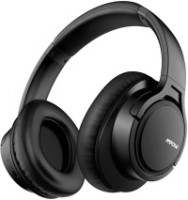 For a second set I decided to purchased a cheaper pair of headphones and connect them to my mixer. I don't require the mixer headphones very often so I decided on the Mpow H7 Bluetooth Headphones which is much cheaper in price.
For a second set I decided to purchased a cheaper pair of headphones and connect them to my mixer. I don't require the mixer headphones very often so I decided on the Mpow H7 Bluetooth Headphones which is much cheaper in price. This set of headphones does not come with a transmitter so I also had to make an additional purchase.
This set of headphones does not come with a transmitter so I also had to make an additional purchase.A transmitter can typically be set to send or receive so purchasing one can serve multiple purposes. I bought a TaoTronics 5.0 Transmitter & Receiver. This unit is very small but does the job perfectly. There's a switch on the side to set for sending or receiving bluetooth signals. A battery charge is good for 10 hours but you can plug it in permanently if you wish.
My starting investment was under $200. I feel I have much more freedom of moving around my area-restricted office and already find I'm rolling over fewer wires.
-
Kala KA-SMHTE-C Solid Mahogany Cutaway Electric Tenor UkuleleMay 12, 2020

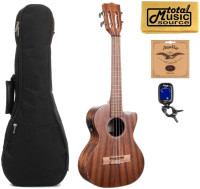 After previously purchasing three concert ukuleles my wife finally decided to invest in a tenor. She had a few requirements; good reviews (of course), solid mahogany (why not?), and electric (okay). She was prepared to pay a bit more as many of us are aware of the saying, "You get what you pay for!"
After previously purchasing three concert ukuleles my wife finally decided to invest in a tenor. She had a few requirements; good reviews (of course), solid mahogany (why not?), and electric (okay). She was prepared to pay a bit more as many of us are aware of the saying, "You get what you pay for!"She decided on the Kala KA-SMHTE-C after many hours (and weeks) of searching and reading. Reviews of this ukulele were hard to find and it doesn't appear to be available everywhere. A visit to the Kala site indicates that, "This product has been discontinued". I sure would like to know the reason why.
I've played around with this ukulele a number of times and I love the tone and love the smoothness of the tuning pegs. I wish a few of my ukuleles were fitted with these pegs.
 Prices can vary greatly on this ukulele so it's best to shop around.
Prices can vary greatly on this ukulele so it's best to shop around. -
MyUke is on Groups.ioMay 8, 2020
I've started a group on Groups.io appropriately named "MyUke". Hopefully we can get a few members to start some favourable ukulele discussions.
From Crunchbase:
"Groups.io is an email groups service that enables users to find and start groups, sync members across services, and archive conversations with hashtags. The system works with Dropbox, Email, Github, Feeds, Google Hangouts, Facebook, and Instagram.
Users can create an announcement, moderated, or restricted group; customize the various welcome, goodbye, monthly, and pending subscription messages; define multiple owners and moderators; monitor the group through the activity log and and track email delivery to members; approve messages from moderated users through either the website or via email; set up events in the group calendar and upload files to the Files section; and create a wiki to store group knowledge. Those who have a Slack Team can sync it with their Groups.io group so that when someone joins their group, they will be automatically invited to join the Slack Team and if someone leaves their group, they will be removed from the Slack Team. They can tag message threads by including hashtags in the subject, restrict them to a predefined set, and search archives by tag. They can mute individual threads and hashtags; and receive every message, opt to receive only the first message in a thread with the option to follow the thread later, opt to receive only messages in threads that they start, or opt to receive no emails at all."
-
Lava U Carbon Fiber Ukulele (Tenor) - UPDATEApr 22, 2020

 Well, the Quick Lock Guitar Strap that I ordered in my previous March 29th News article doesn't work on the Lava U as I had hoped. However, I was able to combine the ends of this guitar strap with a Chicago binding screw (I'm sure a small bolt and nut would do) and then attaching one of the strap ends to the Lava U with a 5/64"x1-9/16" cotter pin. Voilà! I now have a homemade strap for the Lava U.
Well, the Quick Lock Guitar Strap that I ordered in my previous March 29th News article doesn't work on the Lava U as I had hoped. However, I was able to combine the ends of this guitar strap with a Chicago binding screw (I'm sure a small bolt and nut would do) and then attaching one of the strap ends to the Lava U with a 5/64"x1-9/16" cotter pin. Voilà! I now have a homemade strap for the Lava U. -
Avantree HT3189 Wireless HeadphonesApr 20, 2020
 I'm tired of having my headphone cable getting twisting around my chair and/or coming unplugged when I accidentally give it a tug. I also get up early in the morning and don't want to disturb others while I have my early morning practice and chart writing sessions. I wanted, no needed, to replace my current headphones with a set of wireless headphones but I had a requirement. The headphone set required a transmitter. If not, I would also have to buy a bluetooth transmitter.
I'm tired of having my headphone cable getting twisting around my chair and/or coming unplugged when I accidentally give it a tug. I also get up early in the morning and don't want to disturb others while I have my early morning practice and chart writing sessions. I wanted, no needed, to replace my current headphones with a set of wireless headphones but I had a requirement. The headphone set required a transmitter. If not, I would also have to buy a bluetooth transmitter.The Avantree HT3189 Wireless Headphones fit my requirements and the reviews were also promising as were the number of sales. The set can transmit up to 30 meters (100 feet) and can hold a charge for up to 40 hours. The set will connect automatically, no need to pair, and there's lots of connection cables for various configurations. As well, price is always a factor and they fit easily under my $100 budget.
-
Lava U Carbon Fiber Ukulele (Tenor)Mar 29, 2020
 I've now had my Lava U Carbon Fiber Ukulele for a couple of weeks and I am amazed at the sound quality. Reviews of this ukulele have been very impressive and I would recommend it, however, there are many (minor) issues that I found frustrating:
I've now had my Lava U Carbon Fiber Ukulele for a couple of weeks and I am amazed at the sound quality. Reviews of this ukulele have been very impressive and I would recommend it, however, there are many (minor) issues that I found frustrating: • My 'A' string sounded awful although 2 tuners said it was in tune. I change the strings to my goto brand of Worth Brown with a low G.
• My 'A' string sounded awful although 2 tuners said it was in tune. I change the strings to my goto brand of Worth Brown with a low G.
• For an almost indestructible ukulele I don't know why you need an indestructible case (however, it does look nice). The case is very heavy.
• A pick comes with the ukulele. Who uses a pick with a ukulele?
• The case comes with a compartment for storage yet the instructions, pick, and USB cable were later discovered in the throwaway Styrofoam protection. Why weren't they in the compartment? I almost threw then out.
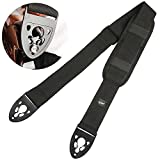 • I always use a strap on my ukuleles. The Lava U has a custom strap system and the strap is currently unavailable for purchase. This is not good and a major disappointment. It is currently very difficult to connect a strap without drilling a hole in the carbon fiber body which I don't want to do. I ordered a Quick Lock Guitar Strap so hopefully this works but I have no guarantee.
• I always use a strap on my ukuleles. The Lava U has a custom strap system and the strap is currently unavailable for purchase. This is not good and a major disappointment. It is currently very difficult to connect a strap without drilling a hole in the carbon fiber body which I don't want to do. I ordered a Quick Lock Guitar Strap so hopefully this works but I have no guarantee.
• The on board effects are nice but, frankly, I don't hear any increase in volume when adjusting the volume dial. Perhaps this only works when the ukulele is plugged into an external amp but there is no indication of this in the instructions.
• The knobs for the effects are terrible (but look nice). They are hard to turn as they are smooth and slippery with no alignment indicator.
 • Attached to the strings was a card with a QR Code. I assumed this would take me to the Lava Music website (https://www.lavamusic.com/en) to download instructions or buy a strap. Nope. It took me to the Google app store to download "WhatsApp". Now that was really annoying.
• Attached to the strings was a card with a QR Code. I assumed this would take me to the Lava Music website (https://www.lavamusic.com/en) to download instructions or buy a strap. Nope. It took me to the Google app store to download "WhatsApp". Now that was really annoying.Despite my negative comments, I love the ukulele. Again, I can't stress enough that the sound quality is amazing. The tuning pegs are smooth to operate and show no visible means as to how they were installed. Again, the Lava U Ukulele is a recommended buy.
-
Go Home River by Brett Watchorn & Steve ParisienMar 22, 2020
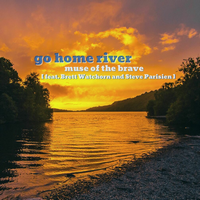 A couple of weeks ago an Australian singer-songwriter, Brett Watchorn, contacted me and asked whether I could produce a chord sheet for his latest song (which he wrote on the ukulele). "Go Home River" is inspired by a river near Georgian Bay, in Ontario, Canada which is about a 5 hour drive from where I live. This easy-listening jazz number is about the pleasure of coming home and the hope that the love that you left is still waiting.
A couple of weeks ago an Australian singer-songwriter, Brett Watchorn, contacted me and asked whether I could produce a chord sheet for his latest song (which he wrote on the ukulele). "Go Home River" is inspired by a river near Georgian Bay, in Ontario, Canada which is about a 5 hour drive from where I live. This easy-listening jazz number is about the pleasure of coming home and the hope that the love that you left is still waiting. You can listen to a sample of "Go Home River" by clicking on the "Play Audio" button. I've posted the chord chart on the Songs page. You can easily support Brett's song by visiting his website at: http://bravemusicaustralia.com.au
You can listen to a sample of "Go Home River" by clicking on the "Play Audio" button. I've posted the chord chart on the Songs page. You can easily support Brett's song by visiting his website at: http://bravemusicaustralia.com.auBrett is currently recording an acoustic album, which he hopes to release in mid-2020. You can follow him of Facebook: https://www.facebook.com/bwatchornmusic
-
How About A Ukulele Podcast?Mar 17, 2020
 With the current state of worldwide health concerns perhaps it's time to take a look at playing more ukulele at home and listening to some podcasts. I've tracked down 3 ukulele podcasts that I've found interesting and would recommend.
With the current state of worldwide health concerns perhaps it's time to take a look at playing more ukulele at home and listening to some podcasts. I've tracked down 3 ukulele podcasts that I've found interesting and would recommend.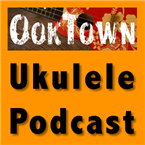 Ukulele Stories is an interview series about people and music and the intersection at which they meet. Ukulele Stories can be found on TuneIn at: https://tunein.com/podcasts/Music-Podcasts/Ukulele-Stories-p1208568
Ukulele Stories is an interview series about people and music and the intersection at which they meet. Ukulele Stories can be found on TuneIn at: https://tunein.com/podcasts/Music-Podcasts/Ukulele-Stories-p1208568OokTown Ukulele Podcast is a place where all things Ukulele and beyond are discussed.
 OokTown can be found on TuneIn at: https://tunein.com/podcasts/Music-Talk/OokTown---The-Ukulele-Podcast-p415073
OokTown can be found on TuneIn at: https://tunein.com/podcasts/Music-Talk/OokTown---The-Ukulele-Podcast-p415073Move over guitar - everyone is playing the ukulele! But what is it about this little instrument that has us all hooked? Ukulele Is The New Black talks to the people who play to find out why they love the ukulele. The TuneIn link is: https://tunein.com/podcasts/Music-Podcasts/Ukulele-Is-The-New-Black-p1188938
-
Caramel CB418 Baritone Ukulele (Part 2): Experimenting With StringsMar 10, 2020
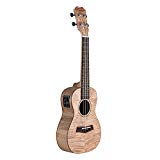 I did some further experimenting with the strings on my Caramel Baritone Ukulele. Although changing to classical guitar strings worked just fine I found the end result sounded too much like my tenor ukuleles. Would I ever play it this way? Some more experimenting was in order.
I did some further experimenting with the strings on my Caramel Baritone Ukulele. Although changing to classical guitar strings worked just fine I found the end result sounded too much like my tenor ukuleles. Would I ever play it this way? Some more experimenting was in order. What if I restrung the baritone an entire octave lower? Would it sound more like a guitar?
What if I restrung the baritone an entire octave lower? Would it sound more like a guitar?I opened a package of Godin Classical Guitar Strings and instead of using the first four strings (DGBE) I used the top four (eADG) and tuned an entire octave lower. After playing for a while I found the top string (very low G) was a little loose and twangy. Therefore, I changed the top string to the guitar B string and tuned it to the standard low G on a ukulele. The sound was a bit better but the replacement B string was still a bit loose. I dug through some fluorocarbon fishing line I have and replaced the top string with 130lb line (you could use a standard low G string).
 I think the result sounds a little closer to a guitar. I'm not sure I like the middle two strings being wound as strumming with my fingernail sometimes produces a click. Having the ukulele tuned an octave lower makes the instrument great for accompanying a group. Click on the "Play Audio" link and have a listen.
I think the result sounds a little closer to a guitar. I'm not sure I like the middle two strings being wound as strumming with my fingernail sometimes produces a click. Having the ukulele tuned an octave lower makes the instrument great for accompanying a group. Click on the "Play Audio" link and have a listen. -
Caramel CB418 Baritone Ukulele (Part 1)Mar 5, 2020
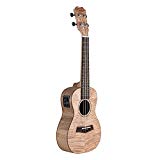 When I was in Florida I visited a couple of Music Stores hunting for a ukulele that was different from what I currently own. In one store I ran across a baritone ukulele that I really liked and the sound was amazing. Upon arrival home I looked up the brand and discovered that the model I was looking at had been restrung with metal strings as the online description I read said DGBE tuning with nylon strings. This discovery lead me to investigate what I could do with a baritone ukulele.
When I was in Florida I visited a couple of Music Stores hunting for a ukulele that was different from what I currently own. In one store I ran across a baritone ukulele that I really liked and the sound was amazing. Upon arrival home I looked up the brand and discovered that the model I was looking at had been restrung with metal strings as the online description I read said DGBE tuning with nylon strings. This discovery lead me to investigate what I could do with a baritone ukulele. After doing some research I settled on buying a Caramel CB418 Baritone Ukulele. The price was good (under $100 US) and the reviews were promising as well. I didn't want to invest a large amount of cash as I planned to restring the new baritone using guitar strings and tune it to low G (gCEA). I was worried that the guitar strings might pull the bridge off and a didn't want to damage an expensive investment. The reason for the string change is because I don't want to learn any new chord shapes (not right now, anyway).
After doing some research I settled on buying a Caramel CB418 Baritone Ukulele. The price was good (under $100 US) and the reviews were promising as well. I didn't want to invest a large amount of cash as I planned to restring the new baritone using guitar strings and tune it to low G (gCEA). I was worried that the guitar strings might pull the bridge off and a didn't want to damage an expensive investment. The reason for the string change is because I don't want to learn any new chord shapes (not right now, anyway). I discovered that it was possible to use classical nylon guitar strings on a baritone and use the first 4 strings (DGBE) to substitute for gCEA. I purchased a set of Dunlop Nylon Ball End Classical Guitar Strings (DCV100NB) and changed the strings as I planned.
I discovered that it was possible to use classical nylon guitar strings on a baritone and use the first 4 strings (DGBE) to substitute for gCEA. I purchased a set of Dunlop Nylon Ball End Classical Guitar Strings (DCV100NB) and changed the strings as I planned.How does it sound? Click on the "Play Audio" link and have a listen.
-
Four Chord Songs Using (Part 4): A Bm/Bm7 D GMar 2, 2020
A collection of four chord songs using: A, Bm/Bm7, D, G. I often use Bm7 instead of Bm.
 Four Chord Songs: A Bm/Bm7 D G
Four Chord Songs: A Bm/Bm7 D GBartender (Lady Antebellum) Big Ole Brew (Mel McDaniel) Blowin' In The Wind (Bob Dylan) Candy Man (Sammy Davis Jr) Fields Of Athenry, The (The Dubliners Have I The Right (The Honeycombs) Hit Somebody (The Hockey Song) (Warren Zevon) Let's Twist Again (Chubby Checker) Lullaby (Front Porch Step) Some Kind Of Wonderful (Grand Funk Railroad) Summer Of '69 (Bryan Adams) Teach Your Children (Crosby, Stills, Nash & Young) With Or Without You (U2)
-
Review - G7th UltraLight Ukulele CapoFeb 28, 2020
 If you're not aware, I often use a capo to play ukulele songs. A capo can make it easier to play a song in the correct key and it can also change the pitch of a song so every ukulele song doesn't sound like it's in the same key.
If you're not aware, I often use a capo to play ukulele songs. A capo can make it easier to play a song in the correct key and it can also change the pitch of a song so every ukulele song doesn't sound like it's in the same key.I experiment with many capos because not every capo fits every ukulele. I've encountered capos that sit crooked and don't hold down all strings evenly. This is the case with the G7th UltraLight Ukulele Capo. I have two Sojing tenor ukuleles which I use almost exclusively and the G7th Capo just doesn't sit properly on the neck.
 I also have two Cordoba tenor ukuleles and the G7th Ultralight works with these so this is where the capo resides.
I also have two Cordoba tenor ukuleles and the G7th Ultralight works with these so this is where the capo resides.The G7th UltraLight actually is extremely ultralight but I question the durability of the capo. However, it does come with a lifetime warranty if any problems are encountered.
At the same time I purchased an Aluminum Alloy Guitar Tuner for under $2 Cdn as an addon item. I see this product isn't currently available as an addon and the price is now around $3. For a quick capo it works great although it's designed for a guitar so positioning sometimes is an issue.
-
Four Chord Songs Using (Part 3): A C D GFeb 21, 2020
A collection of four chord songs using: A, C, D, G. It appears that The Rolling Stones favour these chords.
 Four Chord Songs: A C D G
Four Chord Songs: A C D GAhead By A Century (The Tragically Hip) Fat Bottomed Girls (Queen) Game Of Love, The (Wayne Fontana & The Mindbenders) Get Off Of My Cloud (The Rolling Stones) Honky Tonk Women (The Rolling Stones) Jumpin' Jack Flash (The Rolling Stones) Little Deuce Coupe (The Beach Boys) Mamma Mia (Abba) Me And You And A Dog Named Boo (Lobo) Running Bear (Johnny Preston) We're Going To Be Friends (The White Stripes)
-
The Best Ukulele Songbooks (Part 1)Feb 5, 2020
 After all these years I still find the two Ukulele Songbooks that I return to most are Liz & Jim Beloff's "The Daily Ukulele" (2010) and "The Daily Ukulele Leap Year Edition" (2012). These two books provide a wide selection of songs and are excellent resources for both the beginner and advanced player. Many Ukulele Groups choose to use these books for their playing nights.
After all these years I still find the two Ukulele Songbooks that I return to most are Liz & Jim Beloff's "The Daily Ukulele" (2010) and "The Daily Ukulele Leap Year Edition" (2012). These two books provide a wide selection of songs and are excellent resources for both the beginner and advanced player. Many Ukulele Groups choose to use these books for their playing nights.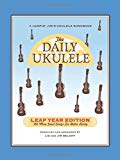 I've noticed the price has dropped on both these books for the printed version. I don't recommend getting an electronic copy as having print makes it easy to write in your own notes for strum patterns, etc. If not, you may find you'll be wanting to print the pages for use.
I've noticed the price has dropped on both these books for the printed version. I don't recommend getting an electronic copy as having print makes it easy to write in your own notes for strum patterns, etc. If not, you may find you'll be wanting to print the pages for use.An earlier book by Jim Beloff entitled "Jumpin' Jim's Ukulele Tips 'N' Tunes: Ukulele Technique" (1994) is geared at the beginner and doesn't really offer much room for advancement although it does contain useful instruction.
 Another one of my favourites is the "Ukulele Fake Book". It contains over 400 songs, some songs overlap in the Beloff books, and the format is almost identical. This book is usually priced a little higher than the Daily Ukulele books but you do get more songs.
Another one of my favourites is the "Ukulele Fake Book". It contains over 400 songs, some songs overlap in the Beloff books, and the format is almost identical. This book is usually priced a little higher than the Daily Ukulele books but you do get more songs.An investment of $25-$35 US should get you one of these great books and any or all are a worthy addition to a collection.
I'll be adding some more recommended books in the future but before I post them I would love to hear what other books players recommend. Please post your comments by clicking on the "COMMENT" button below.
-
Four Chord Songs Using (Part 2): C D Em GFeb 3, 2020
A selection of four chord songs using: C, D, Em, G.
 Four Chord Songs: C D Em G
Four Chord Songs: C D Em G7 Years (Lukas Graham) Black Velvet Band (The Dubliners) Blister In The Sun (The Violent Femmes) Come Dancing (The Kinks) Hey Ya (Outkast) How To Save A Life (The Fray) I Got A Pea (Bryant Oden) I Won't Back Down (Tom Petty) If I Had A Million Dollars (Barenaked Ladies) It Can't Happen To Me (Charlie Major) Let Her Go (Passenger) Loch Lomond (Traditional) Only The Lonely (The Motels) Perfect (Ed Sheeran) Pompeii (Bastille) Up On The Roof (The Drifters) Wagon Wheel (Old Crow Medicine Show) Zombie (The Cranberries)
-
Four Chord Songs Using (Part 1): Am C F GJan 30, 2020
A collection of four chord songs using: Am C F G.
 Four Chord Songs: Am C F G
Four Chord Songs: Am C F GAnd If Venice Is Sinking (Spirit Of The West) Beast Of Burden (The Rolling Stones) Down Under (Men At Work) Friday I'm In Love (The Cure) Have You Every Seen The Rain (Creedence Clearwater Revival) Hey, Soul Sister (Train) Ho Hey (The Lumineers) I'm On Fire (Bruce Springsteen) If I Had A Boat (Lyle Lovett) Last Kiss (J Frank Wilson & The Cavaliers) Learning To Fly (Tom Petty) Little Red Corvette (Prince) Love Somebody (Maroon 5) Love Stinks (J Geils Band) Lovesong (The Cure) One Call Away (Charlie Puth) Renegades (X Ambassadors) Riptide (Vance Joy) Rude (Magic) Screen (Twenty One Pilots) She Drives Me Crazy (Fine Young Cannibals) She Will Be Loved (Maroon 5) Shut Up and Dance (Walk the Moon) Somebody's Baby (Jackson Browne) Stronger Beer (Tim Hicks) Summer Vibe (Walk Off The Earth) This Magic Moment (Jay & The Americans) Treat You Better (Shawn Mendes) Try (Colbie Caillat) What A Song Should Do (Tim Hicks) What About Love (Heart) Whiskey In The Jar (Traditional)
-
You Can Now Add A CommentJan 29, 2020
I spend a bit of time yesterday writing a script that allows a comment to be posted to the News page. You'll notice a button at the bottom right of each News article that says COMMENT (followed by the number of comments available) and if you click on the button a Window will open with the entries. There's no requirement for an email or name for posting so you won't get a reply sent back but you can read the discussion on each article (providing there is one).
-
BanjoUke (Banjolele) Songs Anyone?Jan 25, 2020
Below is a list of songs where I prefer to use a BanjoUke (Banjolele). The list is totally my preference as you can use a BanjoUke with any song you wish.
 BanjoUke Songs
BanjoUke SongsBeverly Hillbillies Theme (Flatt & Scruggs (TV Theme)) Black Velvet Band (Dubliners, The) Cocaine Habit (Old Crow Medicine Show) Dead Skunk In The Middle Of The Road (Loudon Wainright III) Down At The Twist And Shout (Mary Chapin Carpenter) Down By The Riverside (Traditional) Flowers On The Wall (Statler Brothers, The) I Had But Fifty Cents (Traditional) I Shot Your Dog (Fred Eaglesmith) In Hell I'll Be In Good Company (Dead South, The) Jambalaya (Hank Williams) King Of The Road (Roger Miller) Love Story (Taylor Swift) M.T.A. Song, The (Kingston Trio, The) Ottawa LRT Song, The (Dan@MyUke) Rainbow Connection (from "The Muppet Movie") (Kermit The Frog) Sweet City Woman (Stampeders, The) Sweet Pea (Amos Lee) Swimming Song, The (Loudon Wainwright III) This Land Is Your Land (Woodie Guthrie) Unwell (Matchbox Twenty)
-
Three Chord Songs Using (Part 4): A D E7(E)Jan 22, 2020
Below is a list of songs using the chords: A, D, E7(E).
If you prefer to use an E chord instead of an E7 for these songs, feel free. I've included one song that uses an D7 chord instead of a D but you can use either chord.
 Three Chord Songs: A D E7(E)
Three Chord Songs: A D E7(E)A Boy Named Sue (Johnny Cash) All Shook Up (Elvis Presley) Can't You Hear My Heartbeat (Herman's Hermits) Chasing Cars (Snow Patrol) Cocaine Habit (Old Crow Medicine Show) Cotton Fields (Creedence Clearwater Revival) Glory Days (Bruce Springsteen) I Will Remember You (Sarah McLachlan) Jack And Diane (John Cougar Mellencamp) Johnny B Goode (Chuck Berry) Last Time, The (The Rolling Stones) Lay Down Sally (Eric Clapton) Maybellene (Chuck Berry) - A D7 E7 Mony Mony (Tommy James & The Shondells) Oh Boy! (Buddy Holly) Peggy Sue (Buddy Holly) Seven Old Ladies (Traditional) Stir It Up (Bob Marley) Sylvia's Mother (Dr Hook) Three Little Birds (Bob Marley) Tide Is High, The (Blondie) Walking On Sunshine (Katrina & The Waves)
-
Three Chord Songs Using (Part 3): C F GJan 18, 2020
Below is a list of songs using the chords: C, F, G.
Often G and G7 can be interchanged so try playing both chords with a song to settle on what sounds the best.
 Three Chord Songs: C F G
Three Chord Songs: C F GBrand New Key (Melanie Safka) - C F G7 Cat Got Dead, The (Heywood Banks) - C F G Cecilia (Simon & Garfunkel) - C F G7 Cocaine Blues (Johnny Cash) - C F G Come A Little Bit Closer (Jay & The Americans) - C F G Dancing With Myself (Billy Idol) - C F G Don't Look Now (Rodney Carrington) - C F G7 Down On The Corner (Creedence Clearwater Revival) - C F G Elvira (The Oak Ridge Boys) - C F G7 First Cut Is The Deepest, The (Rod Stewart) - C F G Five Years Time (Noah & The Whale) - C F G Happy Birthday (Traditional) - C F G7 Hitchin' A Ride (Vanity Fair) - C F G7 Hockey Song, The (Stompin' Tom Connors) - C F G7 Hound Dog (Elvis Presley) - C F G I Hope That I Don't Fall In Love With You (Tom Waits) - C F G I Walk The Line (Johnny Cash) - C F G7 Just My Imagination (The Temptations) - C F G Kansas City (Wilbert Harrison) - C F G7 King of the Road (Roger Miller) - C F G7 Lava (Kuana Torres Kahele, Napua Greig, James Ford Murphy) - C F G7 Mustang Sally (Wilson Pickett) - C F G My Best Friend's Girlfriend (The Cars) - C F G No No Song (Ringo Starr) - C F G7 Purple People Eater (Sheb Wooley) - C F G7 Red Hot (Billy Lee Riley) - C F G7 Red Red Wine (UB40) - C F G Sam Hall (Johnny Cash) - C F G Save The Last Dance For Me (The Drifters) - C F G Surfin' USA (The Beach Boys) - C F G7 Sweet Little Sixteen (Chuck Berry) - C F G Teddy Bear (Elvis Presley) - C F G7 Turkey In The Straw (Traditional) - C F G Walking The Floor Over You (Ernest Tubb) - C F G What Makes You Beautiful (One Direction) - C F G Wild Rover (Traditional) - C F G7 Your Mama Don't Dance (Loggins & Messina) - C F G Yummy Yummy Yummy (Ohio Express) - C F G Zombies Just Want To Be Loved (Bryant Oden) - C F G
-
Three Chord Songs Using (Part 2): A D GJan 15, 2020
Below is a list of songs using the chords: A, D, G.
Beginners may find this list useful as the songs us a limited number of chords and learning these chords isn't too difficult.
 Three Chord Songs: A D G
Three Chord Songs: A D GAsshole Song, The (August & The Spur Of The Moment Band) Bad Moon Rising (Creedence Clearwater Revival) Da Doo Ron Ron (The Crystals) Devil Woman (Marty Robbins) End Of The Line (The Traveling Wilburys) Free Fallin' (Tom Petty) Hang On Sloopy (The McCoys) Highway To Hell (ACDC) I Fought The Law (The Clash) I Got My Eyes On You (George Thorogood) I Knew The Bride (Nick Lowe) I Love Rock 'N' Roll (Joan Jett & The Blackhearts) I Second That Emotion (Smokey Robinson & The Miracles) In The Summertime (Mungo Jerry) It's Hard To Be Humble (Mac Davis) Itsy Bitsy Teenie Weenie Yellow Polka Dot Bikini (Bryan Hyland) Jet Airliner (Steve Miller Band) Joker, The (Steve Miller Band) Lion Sleeps Tonight, The (The Tokens) Mr Tambourine Man (The Byrds) My Boyfriend's Back (The Angels) My Maria (B W Stevenson) Sink The Bismarck (Johnny Horton) Sugar, Sugar (The Archies) Take A Letter Maria (R B Greaves) Two Tickets To Paradise (Eddie Money) When Will I Be Loved (Linda Ronstadt)
-
Three Chord Songs Using (Part 1): C D GJan 12, 2020
Below is a list of songs using the chords: C, D, G.
You'll notice that for some of the songs use a D7 instead of a D. Often D7 can be substituted for D. The same can be said for using G7 instead of G. In these cases feel free to use whichever chord you think sounds better or is easier to play.
 Three Chord Songs: C D G
Three Chord Songs: C D GAll I Want Is You (Barry Louis Polisar) - C D G All Summer Long (Kid Rock) - C D G Already Gone (The Eagles) - C D G Another Saturday Night (Sam Cooke) - C D7 G Battle of New Orleans, The (Johnny Horton) - C D7 G Big Yellow Taxi (Counting Crows) - C D G Can The Circle Be Unbroken (The Carter Family) - C D G Chicken Fried (Zac Brown Band) - C D G Clementine (Traditional) - C D7 G Copperhead Road (Steve Earle) - C D G Dead Skunk In The Middle Of The Road (Loudon Wainwright III) - C D7 G Get A Haircut (George Thororgood) - C D G Green, Green Grass Of Home (Tom Jones) - C D7 G I Had But Fifty Cents (Traditional) - C D G I Shot Your Dog (Fred Eaglesmith) - C D G If I Were A Carpenter (Bobby Darin) - C D G Long Black Veil (The Band) - C D G Love Me Do (The Beatles) - C D G7 Lumberjack Song, The (Monty Python) - C D G Move It On Over (George Thorogood) - C D G My Ding-A-Ling (Chuck Berry) - C D G No Particular Place To Go (Chuck Berry) - C D G Rattlin' Bog, The (Tradition) - C D G Ring of Fire (Johnny Cash) - C D7 G Royals (Lorde) - C D G Shambala (Three Dog Night) - C D G Sloop John B (The Beach Boys) - C D7 G Squeeze Box (The Who) - C D G Sugar Shack (Jimmy Gilmer & The Fireballs) - C D7 G Them Stems (Chris Stapleton) - C D G Werewolves Of London (Warren Zevon) - C D G Wheat Kings (The Tragically Hip) - C D G Why Don't You Love Me (Hank Williams) - C D7 G
-
Two Chord SongsJan 7, 2020
New ukulele players often think that two chord songs are the easiest to play. While this may be true for some songs, others can often be difficult to sing or strum. Below is a list of two chord songs broken down into categories of Easy, Maybe Easy, and Hard with an explanation as to why.
 Easy Two Chord Songs
Easy Two Chord SongsAchy Breaky Heart (Billy Ray Cyrus) - A E7 Banana Boat Song, The (Harry Belafonte) - A D Dance The Night Away (The Mavericks) - A7 D Draggin' The Line (Tommy James & The Shondells) - C D Drunken Sailor (Traditional) - C Dm Escape [The Pina Colada Song] (Jack Johnson) - A D Iko Iko (The Dixie Cups) - C F G *Essentially 2 chords, only one G chord Jambalaya (Hank Williams) - C G7 Okie From Muskogee (Merle Haggard) - A7 D Over And Over (The Dave Clark Five) - A E7 Paperback Writer (The Beatles) - C G7 Pistol Packin' Mama (Al Dexter) - C7 F Tom Dooley (The Kingston Trio) - A7 D
Maybe Easy Two Chord SongsA Horse With No Name (America) - A7sus4 Am *Learning to strum like the original can be difficult Blurred Lines (Robin Thicke) - D G *Difficult to sing Harden My Heart (Quarterflash) - A F *Easy to play, hard to sing I Want Candy (The Strangeloves) - C F *Difficult strum for beginners Low Rider (War) - F G *Boring without harmonica
Hard Two Chord SongsBad To The Bone (George Thorogood) - C G *Doesn't sound good on a ukulele Tequila (The Champs) - F G *Difficult strum Uptown Funk (Mark Ronson ft. Bruno Mars) - Dm7 G7 *Easy to play but tough to sing
An "Anthology of Easy Two Chord Songs" can be found on the Songbooks page.
-
Most Used Ukulele ChordsDec 20, 2019
I've always seen a circulated graph with the "Most Used Ukulele Chords" but I always questioned how true the graph actually was. Yesterday I wrote a script to go through approximately 1,000 chord charts and obtain a true count from my personal files. Here is my results:
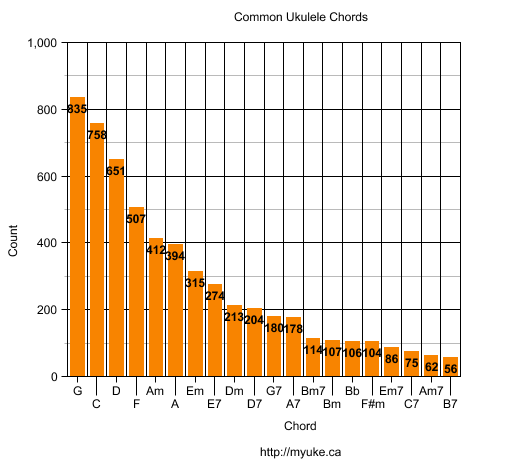
Contrary to the "Most Used Ukulele Chords" chart I find that the "G" chord is used more than the "C" chord. My data may be a little skewed as I tend to use the "E7" instead of the "E" chord. The same is true for "Bm7" and "Bm". However, in general I trust this graph to be more accurate than the current one floating around.
-
An Added SEARCH OperatorDec 5, 2019
You're probably aware that there's a Search function on the Songs page to help filter through the thousand plus posted songs. If you were to enter a search string of "black white" you would get a result of:

I've added an OR operator to the Search function and this is triggered by entering the word "OR" to the beginning of your desired Search string:

Searching for "or black white" would return a result of:
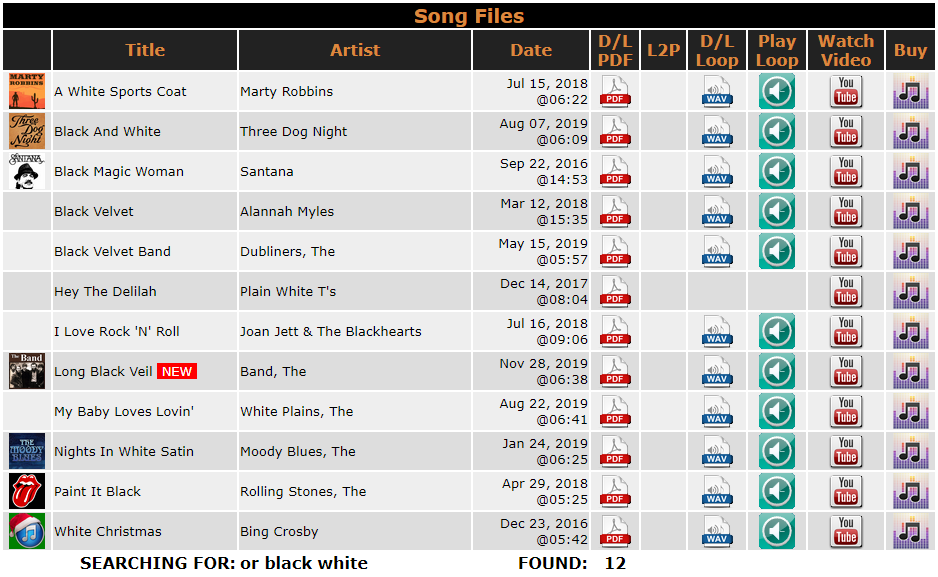
-
BanjoUke (BanjoUke.wiki)Nov 13, 2019
 A few days back I received my new BanjoUke. I already have a concert Magic Fluke Firefly which never holds it's tune despite changing the tuning pegs. And, I prefer a tenor sized ukulele so this new BanjoUke is tenor sized. Priced at $107 Cdn (on Amazon.ca) it comes with a bag and tuner. What a great price!
A few days back I received my new BanjoUke. I already have a concert Magic Fluke Firefly which never holds it's tune despite changing the tuning pegs. And, I prefer a tenor sized ukulele so this new BanjoUke is tenor sized. Priced at $107 Cdn (on Amazon.ca) it comes with a bag and tuner. What a great price!The tuner is a Naomi NM-86 and doesn't come with a battery. I tried the tuner but it doesn't come close to the quality of a Snark.
 I'm not a big fan of tuning pins as I find them difficult to adjust and they always seem to slip (my experience). I changed the pins to something more to my liking and in the process I had to drill the tuning holes slightly larger. You'll notice that I had to put one of the new pegs at an angle because the headstock is an odd shape. There is also a flaw in the positioning of the tail piece which I was unable to correct. However, I can move the saddle slightly so the alignment of the strings isn't too bad.
I'm not a big fan of tuning pins as I find them difficult to adjust and they always seem to slip (my experience). I changed the pins to something more to my liking and in the process I had to drill the tuning holes slightly larger. You'll notice that I had to put one of the new pegs at an angle because the headstock is an odd shape. There is also a flaw in the positioning of the tail piece which I was unable to correct. However, I can move the saddle slightly so the alignment of the strings isn't too bad.For an inexpensive BanjoUke I am pleased with the sound and, for as much as I actually play a BanjoUke, this one suits me just fine.
-
SongbooksNov 9, 2019
I decided to create Songbooks of artists that have 5 or more songs posted on the Songs page. For those who enjoy a specific artist you may find these collections to be of interest. I believe there is close to 30 artists that an Anthology can be created for.
In addition, I may do Songbooks for specific subjects or topics. I've already posted an Anthology of Christmas Songs but I may also do movies and/or TV themes and possibly others.
-
Don't look for "Tiptoe Through The Tulips"Aug 1, 2019
 Since I started playing ukulele the one song I have never played is, "Tiptoe Through The Tulips". The image of Tiny Tim (not the most handsome of men) singing this song on the Ed Sullivan Show still haunts me to this day.
Since I started playing ukulele the one song I have never played is, "Tiptoe Through The Tulips". The image of Tiny Tim (not the most handsome of men) singing this song on the Ed Sullivan Show still haunts me to this day.The song was originally published in 1929 and was written by Al Dubin (lyrics) and Joe Burke (music) and made popular by guitarist Nick Lucas. Tiny Tim's version didn't come out until 1968 and managed to reach #17 on the charts.
For the past 50 years "Tiptoe Through The Tulips" has given the ukulele an image of being a toy and not given the instrument the credit it deserves. Tell a friend you play the ukulele and what's the first song they mention? You'll have to look elsewhere if you what to learn this song.
-
A Selection of Great Sing-alongsJul 29, 2019
Below is a list of songs that I play because they are generally easy to perform, sound pretty darn good on a ukulele, and I like them:
 Great Sing-alongs
Great Sing-alongsA Horse With No Name (America) Ahead By A Century (The Tragically Hip) Another Day In Paradise (Phil Collins) Apache (The Shadows) Baby, I Love Your Way (Peter Frampton) Back In The USSR (The Beatles) Bad, Bad Leroy Brown (Jim Croce) Bennie And The Jets (Elton John) Billie Jean (Michael Jackson) Brother Louie (Stories) Brown Eyed Girl (Van Morrison) California Girls (The Beach Boys) Can't Buy Me Love (The Beatles) Cherry Bomb (John Cougar Mellencamp) Closing Time (Semisonic) Cocaine (Eric Clapton) Cool Kids (Echosmith) Copperhead Road (Steve Earle) Crocodile Rock (Elton John) Dance The Night Away (The Mavericks) Dancing In The Dark (Bruce Springsteen) Daydream (The Lovin' Spoonful) Devil Woman (Marty Robbins) Dirty Old Town (The Pogues) Do Wah Diddy Diddy (Manfred Mann) Don't Look Now (Rodney Carrington) Don't Stop (Fleetwood Mac) Don't Stop Believin' (Journey) Don't Worry, Be Happy (Bobby McFerrin) Down On The Corner (Creedence Clearwater Revival) Eight Days A Week (The Beatles) Escape [The Pina Colada Song] (Jack Johnson) Everybody Wants To Rule The World (Tears For Fears) Ex's And Oh's (Elle King) Ferry Cross The Mersey (Gerry & The Pacemakers) Fields Of Gold (Sting) Fire And Rain (James Taylor) Fooled Around And Fell In Love (Elvin Bishop) For What It's Worth (Buffalo Springfield) Game Of Love, The (Wayne Fontana & The Mindbenders) Ghost Riders In The Sky (Stan Jones & The Death Valley Raiders) Grenade (Bruno Mars) Groovin' (The Young Rascals) Half The World Away (Oasis) Happy Together (The Turtles) Harvest Moon (Neil Young) Have You Every Seen The Rain (Creedence Clearwater Revival) Help Me Rhonda (The Beach Boys) Hey Jude (The Beatles) Hold Me Now (Thompson Twins) Hot N Cold (Katy Perry) Hotel California (Eagles) Hound Dog (Elvis Presley) House Of The Rising Sun (The Animals) How Sweet It Is To Be Loved By You (James Taylor) I Hope That I Don't Fall In Love With You (Tom Waits) I Like Trains (Fred Eaglesmith) I Still Haven't Found What I'm Looking For (U2) I'm A Believer (Neil Diamond) I'm Pretty Good At Drinking Beer (Billy Currington) If I Had A Million Dollars (Barenaked Ladies) If You Could Read My Mind (Gordon Lightfoot) Isn't She Lovely (Stevie Wonder) It's 5 O'Clock Somewhere (Alan Jackson) It's A Heartache (Bonnie Tyler) It's Raining Again (Supertramp) Just My Imagination (The Temptations) Karma Chameleon (Culture Club) Knockin' On Heaven's Door (Bob Dylan) Kokomo (The Beach Boys) Last Kiss (J Frank Wilson & The Cavaliers) Letter, The (The Box Tops) Long Cool Woman (The Hollies) Losing My Religion (REM) Love Me Do (The Beatles) Mad World (Gary Jules) Margaritaville (Jimmy Buffett) Me And Bobby McGee (Kris Kristofferson) More Today Than Yesterday (Spiral Staircase) Move It On Over (George Thorogood) My Eyes Adored You (Frankie Valli & The Four Seasons) No Particular Place To Go (Chuck Berry) On And On (Stephen Bishop) Only Love Can Break Your Heart (Neil Young) Paperback Writer (The Beatles) Perfect (Ed Sheeran) Piano Man (Billy Joel) Pumped Up Kicks (Foster The People) Rawhide (The Blues Brothers) Riders On The Storm (The Doors) Rikki Don't Lose That Number (Steely Dan) Rock And Roll Music (Chuck Berry) Roll Over Beethoven (Chuck Berry) Rude (Magic!) Satisfaction (The Rolling Stones) Secret Agent Man (Johnny Rivers) Shape Of You (Ed Sheeran) Showdown (ELO) Slip Slidin' Away (Paul Simon) Sloop John B (The Beach Boys) Smile (Uncle Kracker) Spooky (Dusty Springfield) Stand By Me (Ben E King) Summer Of '69 (Bryan Adams) Sunglasses At Night (Corey Heart) Sweet Caroline (Neil Diamond) Sweet City Woman (The Stampeders) Then I Kissed Her (The Beach Boys) Under My Thumb (The Rolling Stones) Unwell (Matchbox Twenty) Up On The Roof (The Drifters) Wagon Wheel (Old Crow Medicine Show) Weight, The (The Band) Wicked Game (Chris Isaac) You're In My Heart (Rod Stewart) You're Sixteen (Ringo Starr) You're So Vain (Carly Simon)
I know that there are lots of other great tunes out there and this is just a list that I keep handy for sing-alongs.
-
A Milestone!Jun 7, 2019
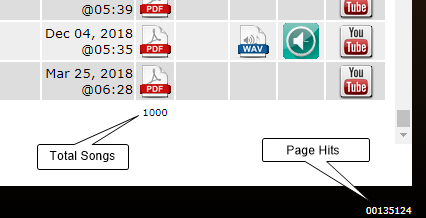 Today MyUke hit a milestone. Besides June 7th being my son's birthday; with the addition of "Taxi" by Harry Chapin 1,000 ukulele song files have been posted!
Today MyUke hit a milestone. Besides June 7th being my son's birthday; with the addition of "Taxi" by Harry Chapin 1,000 ukulele song files have been posted!MyUke has over 800 followers on Instagram and 100 on Twitter. We're also nearing 10,000 unique visitors to the site and have had over 278,000 files downloaded. I've probably posted an average of 5 new song files per week over the past year all for the love of a simple instrument.
It looks like the most popular song is "A Horse With No Name" by America. It has been accessed over 1,000 times along with "Sittin' On The Dock Of The Bay" by Otis Redding.
In other news, I've recently added a script that allows visitors to "Live Chat" with me. I haven't got to try it, yet. A button to "Live Chat" can be found on the Contact page. I'm almost always available in the early morning (5:00am-8:00am EST).
I've consider doing a Live Jam some evening even though I'm not the greatest player or singer. I have all the tools lined up but I haven't arranged anything. I'd appreciate hearing from you if you have an interest in participating.
-
Song Page Display SpeedApr 30, 2019
 I haven't posted anything to the Digest page for some time and I thought I should get back to doing so.
I haven't posted anything to the Digest page for some time and I thought I should get back to doing so.Yesterday I spend some time improving the "Songs" page. The site is now getting close to 1,000 songs and because on the number the method that I was using to display my song database was a bit slow. It worked fine initially but with the improvements I believe the display is about twice as fast for the complete listing as well as with the Search and Artist searches. I still have about 30-40 songs that haven't been posted and I continue to created a song chord chart almost every other day.
If there's a song you'd like to see, please let me know through the Contact page.
-
Chord Charts Updates!Aug 17, 2018
 It took about three months but I finally reviewed every chord chart posted on the "Ukulele Songs" page. Some had major errors, some I changed the playing key, and many were left unchanged.
It took about three months but I finally reviewed every chord chart posted on the "Ukulele Songs" page. Some had major errors, some I changed the playing key, and many were left unchanged.The major reason for the review was to add a "Capo" entry which allows you to play a song in the same key as the original artist. Place a capo across the ukulele fret at the capo number indicated on the chord chart.
Other entries you may see in some charts is "Capo unknown". This means the song probably doesn't have an original artist like some Traditional songs (example: "Happy Birthday"). Another entry you may see is "Capo none (-1)", "Capo none (-2)", etc. This means you won't be able to play the song using a capo unless you can tune your ukulele down a step or more. If a chord chart does not have any capo information then assume that playing without a capo will play the song in the correct key of the artist.
Happy strumming!
-
Astro Foldable UkuleleApr 21, 2018
 I ran across a news article about the Astro Foldable Ukulele that was looking for startup pledges on Kickstarter. I guess I landed on the site on the right day as I was able to make a pledge to buy the Astro Acoustic model for €149 (about $180US). Delivery of the Astro is to begin in November 2018. The Astro comes in two models, an acoustic version and an electric version (about €20 more than acoustic model) and can be plugged into an amp or attach headphones. The Astro is made in Italy.
I ran across a news article about the Astro Foldable Ukulele that was looking for startup pledges on Kickstarter. I guess I landed on the site on the right day as I was able to make a pledge to buy the Astro Acoustic model for €149 (about $180US). Delivery of the Astro is to begin in November 2018. The Astro comes in two models, an acoustic version and an electric version (about €20 more than acoustic model) and can be plugged into an amp or attach headphones. The Astro is made in Italy.The Astro looks like a great travel companion so I'm all in. I sure hope I (and you) don't miss out on a chance to show off an Astro at a future ukulele outing.
 From the Astro Kickstarter page:
From the Astro Kickstarter page:"The Astro is the first foldable and collapsible ukulele; thanks to its incredible features and shapes, Astro will follow you in all your adventures and journeys, together with your music passion. Small and compact, Astro has been designed to fit into any bag, backpack or even jacket pockets, causing no additional effort, thanks to its light weight. Transform your daily journey, any waiting time or lunch break in a moment of happiness and passion, with your favorite instrument always at your disposal."
The Astro Kickstarter page can be found here.
-
My 9th Ukulele goes to Toy MountainDec 6, 2017
 My daughter came home yesterday and informed us that her work was collecting donations for Toy Mountain. Toy Mountain takes a new, unwrapped toy and makes it a special Christmas gift for girls and boys in need. She informed us that the ages between 10 and 12 was the most difficult for providing gifts. After some thought I remembered I had won a Mahalo U2K ukulele at the Montreal Uke Fest in 2016. Seeing as the Mahalo U2K was my 9th ukulele, a soprano in size (I play tenors), and definitely not my color, it should make a perfect gift. In fact, I have never even tuned it.
My daughter came home yesterday and informed us that her work was collecting donations for Toy Mountain. Toy Mountain takes a new, unwrapped toy and makes it a special Christmas gift for girls and boys in need. She informed us that the ages between 10 and 12 was the most difficult for providing gifts. After some thought I remembered I had won a Mahalo U2K ukulele at the Montreal Uke Fest in 2016. Seeing as the Mahalo U2K was my 9th ukulele, a soprano in size (I play tenors), and definitely not my color, it should make a perfect gift. In fact, I have never even tuned it.Merry Christmas to all!
-
500 Songs!Sep 12, 2017
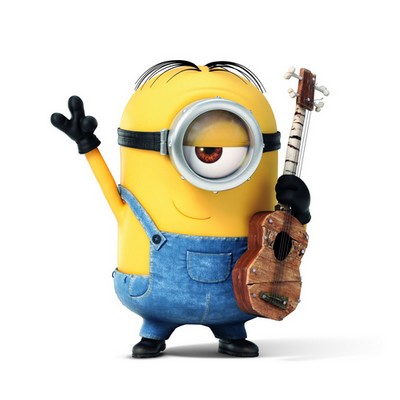 With the addition of the Elvis Presley tune, "Good Luck Charm", 500 songs have now been posted to MyUke.ca in under 2 years! The site has received over 3,000 unique visitors and over 120,000 files have been downloaded. Although this may not seem like a lot by some standards I think it's quite an achievement for a ukulele only site that has put nothing toward advertising.
With the addition of the Elvis Presley tune, "Good Luck Charm", 500 songs have now been posted to MyUke.ca in under 2 years! The site has received over 3,000 unique visitors and over 120,000 files have been downloaded. Although this may not seem like a lot by some standards I think it's quite an achievement for a ukulele only site that has put nothing toward advertising.I've received some very nice emails that have been all been positive about the site. I've tried to keep everything simplistic and easy for both viewing and for me to handle. All the songs have been tested and played to the best of my ability (which isn't too great in some instances).
Although I've only been playing the ukulele for a couple of short years it has consumed quite a bit of my time. I plan to begin posting videos of songs to play-along with which may be beneficial to some while others (perhaps most) will think my playing and singing skills are atrocious. I hope you have all enjoyed the journey so far.
-
My First UkuleleJul 28, 2017
 When I retired I had plans of learning to play the guitar and, after months of playing I found I had improved but I would say I was still a piece away from actually playing a song. Therefore, I decided to play an easier instrument and that instrument was a harmonica. I enrolled at a local music centre for lessons and enjoyed playing. After chatting to a fellow student about my guitar efforts it was suggested that I give the ukulele a try.
When I retired I had plans of learning to play the guitar and, after months of playing I found I had improved but I would say I was still a piece away from actually playing a song. Therefore, I decided to play an easier instrument and that instrument was a harmonica. I enrolled at a local music centre for lessons and enjoyed playing. After chatting to a fellow student about my guitar efforts it was suggested that I give the ukulele a try.A ukulele is quite inexpensive compared to many other instruments (as little as $40 Cdn). I decided on a concert size Les Paul Cherry Sunburst Epiphone purchased online. The reason for my choice was the Epiphone had an electric hookup (one of my requirements), it looked good, and the reviews all seemed favorable.
For my guitar efforts I did not take person on person lessons and chose to use sources on the Internet. With the ukulele I enrolled at a local music shop for beginner class. What a great decision! Beginning with the first class we began to play songs much to my pleasure. Although my finger didn't move quickly and I couldn't sing and play at the same time, I could see that this was an instrument worth learning.
Many beginner ukulele players ask if there's an easy way to learn chords. I wondered the same thing but after playing for several months you'd be surprised how many chords you quickly learn to memory.
Strumming can be another issue. Initially, some common strums seem to take a great deal of effort. The common Hawaiian strum (or Swiss Army strum) of "d-Du-udu" seemed to take forever to master but now seems natural and easy.
Singing and playing does take some time to master and I still find I can be a bit monotone if I focus too much on the ukulele side of the combination.
I have now been playing the ukulele over 2 years and started the "MyUke.ca" website about a year ago to share a passion.
-
George Formby's banjolele sells for £28,500Jul 15, 2017
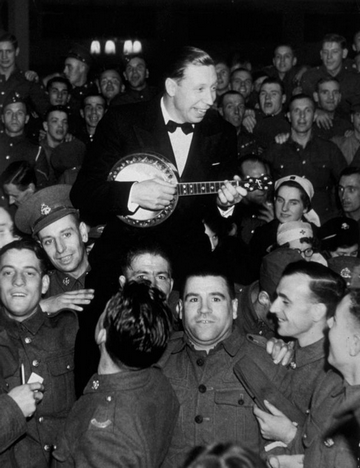 A banjo ukulele formerly owned by popular 1930s and 40s entertainer George Formby sold at auction for £28,500. The Gibson UB3 was sold to a man living in the UK by Hansons Auctioneers in Etwall, Derbyshire. The banjolele was last sold privately in 1972, when late Formby fan Terence Wallin paid £310 for it. It was originally purchased in 1961 from Formby's estate by Bill Logan, the first president of the George Formby Society.
A banjo ukulele formerly owned by popular 1930s and 40s entertainer George Formby sold at auction for £28,500. The Gibson UB3 was sold to a man living in the UK by Hansons Auctioneers in Etwall, Derbyshire. The banjolele was last sold privately in 1972, when late Formby fan Terence Wallin paid £310 for it. It was originally purchased in 1961 from Formby's estate by Bill Logan, the first president of the George Formby Society.George Harrison tried to buy the banjolele from Mr Wallin in the early 90s, but he would not part with it. Decades later, Mr Wallin's family came across it during a clear out and decided to let it go. Mr Wallin's son Terry said, "He told me about George Harrison wanting to buy it but dad also bought an inscribed silver salver with the banjolele which was given to George Formby and his wife Beryl by theatre impresario Tom Arnold. "George Harrison didn't want the silver salver, just the banjo ukulele, but dad wanted to keep everything together. That's why he wouldn't part with it." There are only three of the Gibson banjo ukuleles which Formby used, and one was sold for £72,000 at auction to Queen's Brian May in 2008.
-
When To Use A CapoJul 12, 2017
What is a Capo?
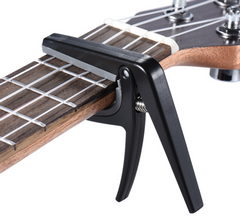 A capo is a small device that clamps onto the neck of a ukulele and shortens the length of the strings, thus raising the pitch. A capo is usually fastened across all the strings (like playing a bar chord). The word "capo" is taken from the Italian word for "head". The purpose of using a capo is to allow playing in a different key while still using the original non-capo chord shapes.
A capo is a small device that clamps onto the neck of a ukulele and shortens the length of the strings, thus raising the pitch. A capo is usually fastened across all the strings (like playing a bar chord). The word "capo" is taken from the Italian word for "head". The purpose of using a capo is to allow playing in a different key while still using the original non-capo chord shapes.It is recommended that the capo be placed directly behind the fret but this may hinder your hand and fingers with their positioning for chords. I usually leave a bit of a gap behind the fret. Even with doing this I still find using a capo a bit uncomfortable.
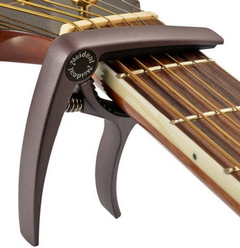 Types of Capos
Types of CaposThere are many different types of capos. On this page I've shown the 4 different capos that I own. A capo can cost anywhere between a couple of dollars and perhaps $20. They can be made of plastic or metal.
I prefer to use the Meideal Capo. It's priced around $10 and is quite sturdy.
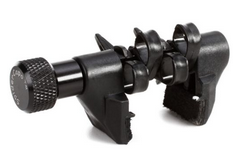 All capos do basically the same thing except for the SpiderCapo Mini. It is something that is unique in the sense that it can do more than just bar strings. It lets you choose which strings across a fret you wish to hold down. I haven't found a use for this capo, yet.
All capos do basically the same thing except for the SpiderCapo Mini. It is something that is unique in the sense that it can do more than just bar strings. It lets you choose which strings across a fret you wish to hold down. I haven't found a use for this capo, yet.When do I use a Capo?
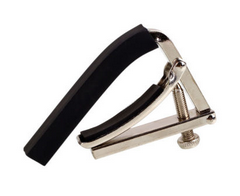 Typically there are not a whole lot of reasons to use a capo for a ukulele player. The pitch of a ukulele is already quite high (for me anyway) and it's not often that I would want to sing or perform in a higher key. Below is my list of reasons to use a Capo:
Typically there are not a whole lot of reasons to use a capo for a ukulele player. The pitch of a ukulele is already quite high (for me anyway) and it's not often that I would want to sing or perform in a higher key. Below is my list of reasons to use a Capo:1. You want to accompany or practice a song that's being played in a higher key.
2. You want to play-along with someone else and they are playing in a higher key.
3. A song you are playing doesn't sound right unless it is played in a different key. I can only thing of one song that I use a capo regularly for and that's "Everybody Wants To Rule The World" by Tears For Fears.
-
MyUke Website MigrationJul 9, 2017
I completed the migration of the MyUke website this morning. I'm using a new software to handle the site which allows more flexibility. The new site should show a slight improvement in speed although it probably isn't significant enough to notice.
BeatLooper has been updated to version 1.3.0 and now has the ability to play FLAC files. I'm not sure how many uses are using the FLAC format but I thought I would add it just the same. For information on the FLAC Lossless Audio Codec, visit: https://xiph.org/flac/
-
George Formby's banjo ukulele to be sold at auctionJun 24, 2017
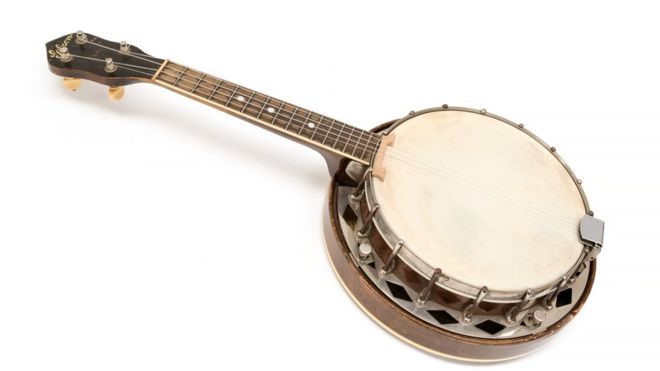 A banjo ukulele owned by popular 1930s and 40s entertainer George Formby is to be auctioned, with an estimated sale price of £30,000. Hansons Auctioneers said the Gibson UB3 banjolele is expected to attract worldwide interest at the sale on 30 June, in Etwall, Derbyshire.
A banjo ukulele owned by popular 1930s and 40s entertainer George Formby is to be auctioned, with an estimated sale price of £30,000. Hansons Auctioneers said the Gibson UB3 banjolele is expected to attract worldwide interest at the sale on 30 June, in Etwall, Derbyshire.In 2008, another George Formby banjo ukulele sold for for £72,000 at auction to Queen's Brian May.
In 1936, the BBC banned Formby's song The Window Cleaner for being smutty.
Who was George Formby?
 He was born George Hoy Booth on 26 May 1904, in Wigan and was the eldest of seven children. The actor, singer-songwriter and comedian's show business career started in 1921 and lasted 40 years until his death in 1961. He was famous for playing the banjolele and by 1939 was the most popular and highest paid entertainer in the British Isles - he was estimated to be earning more than £100,000 a year. Formby appeared in 21 films, made more than 230 records, entertained on stage hundreds of times, performed twice by royal command and entertained an estimated three million allied servicemen and women during World War Two.
He was born George Hoy Booth on 26 May 1904, in Wigan and was the eldest of seven children. The actor, singer-songwriter and comedian's show business career started in 1921 and lasted 40 years until his death in 1961. He was famous for playing the banjolele and by 1939 was the most popular and highest paid entertainer in the British Isles - he was estimated to be earning more than £100,000 a year. Formby appeared in 21 films, made more than 230 records, entertained on stage hundreds of times, performed twice by royal command and entertained an estimated three million allied servicemen and women during World War Two.In 1960, Formby made his last record, "Happy Go Lucky Me", and in December that year made what was his final television programme, The Friday Show.
-
How to Play Loops in AudacitySep 25, 2016
Sound loops found on our Songs page can also be played as loops in Audacity. Follow these simple instructions:
1. Download and extract the desired loop.
2. Open and load the loop into Audacity (Ctrl+O).
3. Select the entire loop in Audacity (Ctrl+A).
4. Begin playing the loop by holding down the Shift key and clicking the Play icon.
When the Shift key is held down the Audacity play button changes into a green circular arrow loop.

-
Establishing a Constant Playing TempoJul 30, 2016
A beginner ukulele player often has difficulty with playing tempo. As a song progresses often times their strumming speed begins to increase. A metronome is very useful but I found working with a drum loop even more beneficial.
 I wrote SoundLooper for just such a purpose. I created drum patterns that resemble the original beat from a song and set it into a loop using SoundLooper.
I wrote SoundLooper for just such a purpose. I created drum patterns that resemble the original beat from a song and set it into a loop using SoundLooper.You may also find that using a program like SoundLooper will also help you with your speed in making chord changes.
SoundLooper is available for Windows and can be found on our Downloads page. Many posted ukulele chord sheets have attachment sound loops on the Songs page.
-
MyUke.caDec 22, 2015
The "MyUke.ca" website came into fruition yesterday (December 21, 2015). I had been meaning to start a ukulele website for some time but just haven't fit it into my schedule.
I have always wanted to learn how to play the guitar and when I retired I bought myself one. After playing for a couple of months I could see myself improving but I was still not to the point of playing a song. The guitar (or me) had a slow learning curve.
After taking harmonica lessons for a few sessions at a local music shop a fellow student recommended trying the ukulele. Since the ukulele is a relatively cheap instrument I purchased one and enrolled in classes.
I have now been playing the ukulele for about 6 months and quite enjoy the social aspect of a local Ukulele Group. As well, the learning curve of a ukulele is much smaller than that of a guitar.
